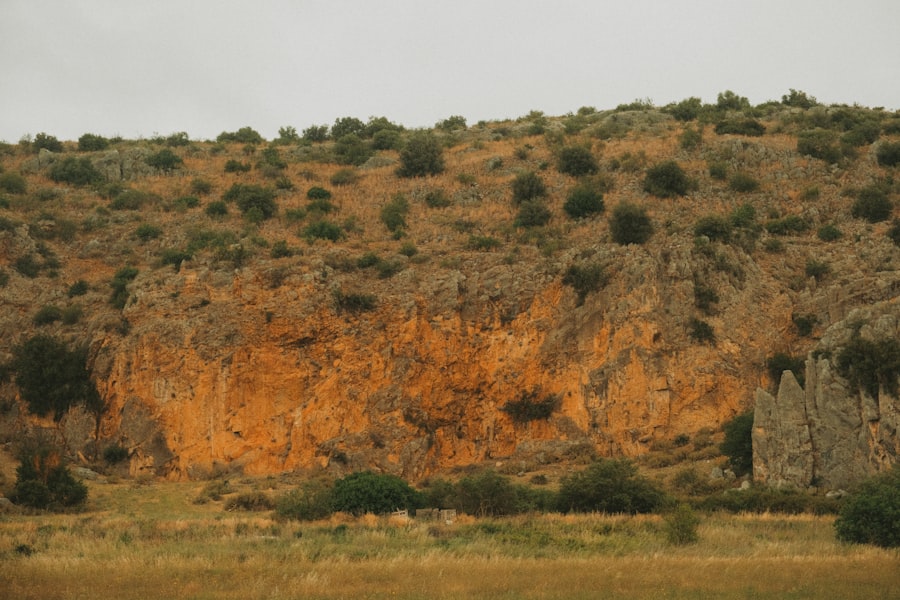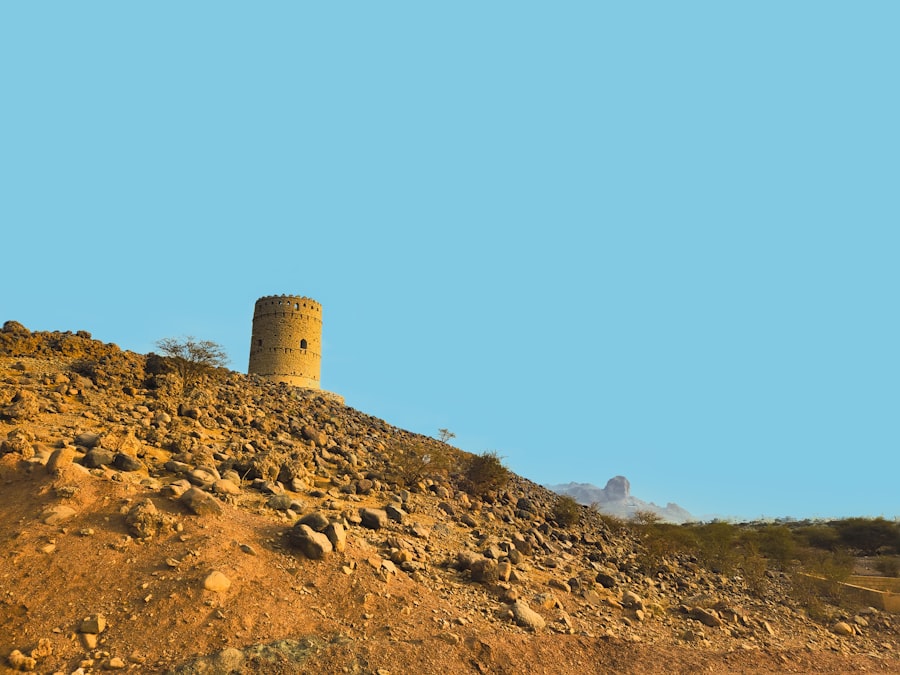The Kola Borehole, located on the Kola Peninsula in northwestern Russia, stands as a monumental achievement in the field of geology and engineering. Drilled between 1970 and 1994, this remarkable project reached a staggering depth of 12,262 meters (40,230 feet), making it the deepest artificial point on Earth. The borehole was initiated by the Soviet Union as part of a scientific endeavor to explore the Earth’s crust and gain insights into its composition and structure.
The sheer scale of this undertaking is awe-inspiring, as it involved drilling through various geological layers, each presenting unique challenges and discoveries. The Kola Borehole not only represents a significant engineering feat but also serves as a symbol of human curiosity and the relentless pursuit of knowledge. As scientists drilled deeper into the Earth, they encountered extreme temperatures and pressures, pushing the limits of technology and human endurance.
The project was not merely about reaching a record depth; it was an ambitious attempt to unlock the mysteries hidden beneath the Earth’s surface, providing invaluable data that would shape future geological studies.
Key Takeaways
- The Kola Borehole is the deepest hole on Earth, reaching a depth of over 7.5 miles.
- The purpose of the Kola Borehole Project was to advance scientific knowledge about the Earth’s crust and geology.
- The Kola Borehole project led to unprecedented discoveries about the Earth’s crust and structure.
- The deep drilling at the Kola Borehole uncovered ancient secrets and provided valuable insights into the Earth’s history.
- The engineering feats and technological breakthroughs at the Kola Borehole project presented significant challenges in deep drilling.
The Quest for Scientific Knowledge: The Purpose of the Kola Borehole Project
The primary objective of the Kola Borehole project was to investigate the geological structure of the Earth’s crust and to understand its composition better. Scientists aimed to study the physical and chemical properties of rocks at unprecedented depths, which would ultimately contribute to a more comprehensive understanding of geological processes. By drilling into the crust, researchers hoped to gather samples that could reveal information about the formation of the Earth and its tectonic activities.
Moreover, the Kola Borehole was designed to explore the transition between the Earth’s crust and mantle. This boundary, known as the Mohorovičić discontinuity or “Moho,” is a critical area for understanding seismic activity and plate tectonics. The data collected from this borehole would provide insights into how these geological processes influence the Earth’s surface and contribute to phenomena such as earthquakes and volcanic eruptions.
Unprecedented Depths: Exploring the Geology and Structure of the Earth’s Crust

As scientists descended into the depths of the Kola Borehole, they encountered a diverse array of geological formations that painted a vivid picture of the Earth’s crust. The borehole traversed various rock types, including granite, gneiss, and schist, each revealing different aspects of geological history. The temperature increased dramatically with depth, reaching around 180 degrees Celsius (356 degrees Fahrenheit) at its deepest point, which posed significant challenges for drilling equipment and researchers alike.
The geological layers encountered in the Kola Borehole provided crucial information about the processes that shaped the Earth’s crust over millions of years. For instance, researchers discovered that certain rock formations contained minerals that indicated past volcanic activity, while others revealed evidence of ancient oceanic environments. This wealth of information allowed scientists to reconstruct the geological history of the region and gain insights into broader tectonic processes that govern the Earth’s surface.
Uncovering Ancient Secrets: Discoveries Made in the Kola Borehole
| Depth | 7.5 miles |
|---|---|
| Temperature | 356°F |
| Age of Rocks | 2.7 billion years |
| Discoveries | Microorganisms, hydrogen gas, and unusual geological formations |
The Kola Borehole yielded numerous discoveries that have had a lasting impact on geological science. Among these findings were samples of ancient microorganisms trapped within rock formations, some dating back over two billion years. These microorganisms provided a glimpse into early life on Earth and raised intriguing questions about the resilience of life in extreme conditions.
The discovery of these ancient life forms not only expanded our understanding of biological evolution but also opened new avenues for research into extremophiles—organisms that thrive in harsh environments. Additionally, researchers found unexpected mineral deposits within the borehole that suggested previously unknown geological processes. For example, certain minerals indicated that high-pressure conditions existed deep within the Earth’s crust, challenging existing theories about how these minerals formed.
Such discoveries have prompted scientists to reevaluate their understanding of geological processes and have led to new hypotheses regarding mineral formation and distribution.
The Challenges of Deep Drilling: Engineering Feats and Technological Breakthroughs
Drilling to such unprecedented depths presented numerous engineering challenges that required innovative solutions. The extreme temperatures and pressures encountered in the Kola Borehole necessitated advancements in drilling technology. Engineers developed specialized drilling rigs capable of withstanding harsh conditions while maintaining precision and efficiency.
The use of advanced materials for drill bits and casing was crucial in preventing equipment failure during drilling operations. Moreover, managing the influx of fluids and gases from deep within the Earth posed additional challenges. As pressure increased with depth, scientists had to implement sophisticated systems to control these elements while ensuring safety for personnel involved in the project.
The lessons learned from these engineering feats have had far-reaching implications for future deep drilling projects, influencing techniques used in oil exploration, geothermal energy extraction, and scientific research.
The Kola Borehole and the Search for Life Below the Surface

One of the most fascinating aspects of the Kola Borehole project was its exploration of potential life forms existing deep beneath the Earth’s surface. The discovery of ancient microorganisms within rock samples raised questions about life’s adaptability and resilience in extreme environments. These findings suggested that life could exist far below the surface, thriving in conditions previously thought inhospitable.
The implications of these discoveries extend beyond Earth itself; they have sparked interest in astrobiology and the search for extraterrestrial life. If life can exist in such extreme conditions on Earth, it raises possibilities for similar organisms existing on other celestial bodies, such as Mars or Europa, one of Jupiter’s moons. The Kola Borehole has thus become a focal point for discussions about life’s origins and its potential existence beyond our planet.
The Kola Borehole and the Race for Resources: Potential for Energy and Minerals
In addition to its scientific significance, the Kola Borehole has implications for resource exploration. The geological data obtained from this project has provided insights into potential mineral deposits and energy resources located deep within the Earth’s crust. As global demand for energy continues to rise, understanding these resources becomes increasingly important.
The borehole’s findings have highlighted areas rich in valuable minerals such as copper, nickel, and rare earth elements. These resources are essential for various industries, including electronics, renewable energy technologies, and advanced manufacturing. As nations seek to secure their energy futures, projects like the Kola Borehole serve as a reminder of the untapped potential lying beneath our feet.
The Kola Borehole and the Study of Earthquakes and Seismic Activity
The Kola Borehole has also contributed significantly to understanding seismic activity and earthquakes. By providing direct access to geological formations associated with tectonic movements, researchers have been able to study stress accumulation along fault lines more effectively. This data is crucial for developing models that predict seismic events and assess risks associated with earthquakes.
Furthermore, insights gained from the borehole have informed our understanding of how seismic waves travel through different rock types at varying depths. This knowledge is vital for improving earthquake preparedness and response strategies in regions prone to seismic activity. The Kola Borehole thus plays a pivotal role in enhancing global efforts to mitigate earthquake-related risks.
The Legacy of the Kola Borehole: Impact on Scientific Research and Exploration
The legacy of the Kola Borehole extends far beyond its record-breaking depth; it has profoundly influenced scientific research and exploration methodologies worldwide. The data collected from this project has become a cornerstone for geological studies, shaping theories about Earth’s formation and evolution. Researchers continue to reference findings from the borehole in their work, underscoring its lasting impact on geology.
Moreover, the engineering innovations developed during the Kola Borehole project have paved the way for future deep drilling initiatives across various fields. From oil exploration to environmental studies, lessons learned from this ambitious endeavor continue to inform best practices in drilling technology and safety protocols.
The Future of Deep Drilling: Lessons Learned from the Kola Borehole Project
As humanity looks toward future deep drilling projects, the Kola Borehole serves as both an inspiration and a cautionary tale. The challenges faced during its construction highlighted the need for continuous innovation in drilling technology and safety measures. Future projects can benefit from understanding these challenges while also leveraging advancements in materials science and engineering techniques.
Additionally, interdisciplinary collaboration will be essential for future endeavors in deep drilling.
The lessons learned from the Kola Borehole will undoubtedly shape how future generations approach deep exploration.
Unanswered Questions and New Frontiers: Continuing the Exploration of the Earth’s Depths
Despite its remarkable achievements, many questions remain unanswered regarding Earth’s depths. The Kola Borehole has opened new frontiers in geological research but has also highlighted gaps in knowledge that warrant further exploration. Scientists are eager to delve deeper into understanding not only geological processes but also potential life forms existing beneath our feet.
As technology continues to advance, new methods for deep drilling are being developed that may allow researchers to reach even greater depths than those achieved by the Kola Borehole. These future explorations hold promise for uncovering additional secrets about our planet’s history and its dynamic processes. The quest for knowledge about Earth’s depths is far from over; it is an ongoing journey fueled by curiosity and scientific inquiry that will continue to captivate generations to come.
The Kola Borehole, often referred to as the deepest artificial point on Earth, has been a subject of fascination and scientific inquiry since its inception. This ambitious project, which aimed to penetrate the Earth’s crust, has provided invaluable insights into the geological and thermal properties of the Earth’s interior. One of the most intriguing discoveries was the unexpected presence of water at such profound depths, challenging previous assumptions about the Earth’s subsurface. For those interested in exploring more about the scientific discoveries and implications of the Kola Borehole, a related article can be found on Hey Did You Know This, which delves into the fascinating details and broader impacts of this groundbreaking project.
FAQs
What are the scientific discoveries of the Kola Borehole?
The Kola Borehole, located in Russia, was drilled as a scientific research project to study the Earth’s crust. The main scientific discoveries include the confirmation of the Earth’s crust being much thicker than previously thought, the discovery of ancient microorganisms at extreme depths, and the understanding of the geothermal gradient and heat flow within the Earth’s crust.
How thick is the Earth’s crust according to the Kola Borehole findings?
The Kola Borehole confirmed that the Earth’s crust is much thicker than previously estimated. At the borehole’s deepest point, the crust was found to be approximately 40 kilometers thick, which is significantly deeper than the previous estimates of around 20-30 kilometers.
What ancient microorganisms were discovered at the Kola Borehole?
Microorganisms dating back millions of years were discovered in the rock samples retrieved from the depths of the Kola Borehole. These microorganisms provided valuable insights into the possibility of life existing at extreme depths and under high pressure and temperature conditions.
What did the Kola Borehole reveal about the Earth’s geothermal gradient and heat flow?
The Kola Borehole provided important data on the Earth’s geothermal gradient and heat flow within the crust. It helped scientists understand the distribution of heat within the Earth’s crust and provided valuable information for geothermal energy research and exploration.
